Clean camping accessories effectively and easily
Grab your family and pet and head off into the great outdoors in your caravan! Whether for a weekend trip or as a carefully planned holiday - the next camping trip and outdoor adventure is sure to happen. To keep everything as clean as at home, camping accessories and gear needs to be cleaned regularly. Here are useful tips on how to get camping equipment, hiking boots, your bike etc. clean again.
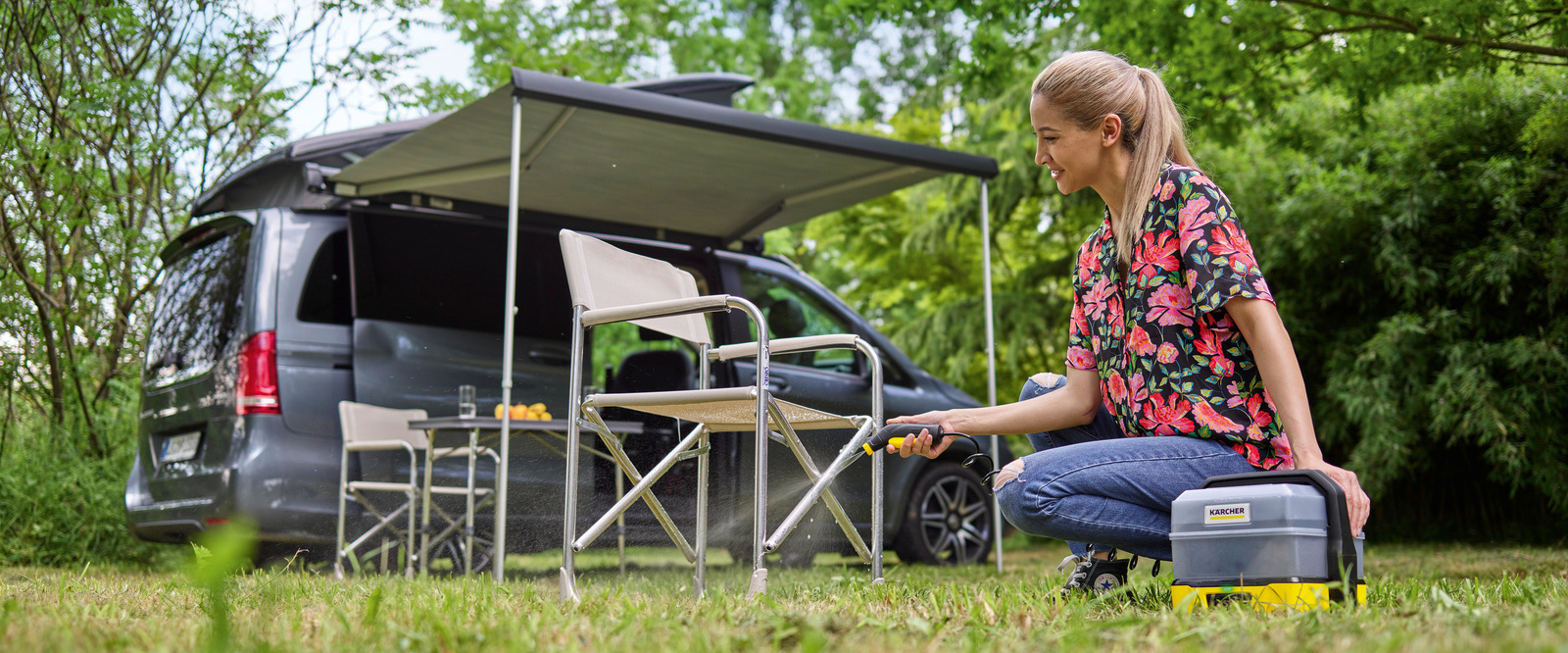
What is the most effective way to clean camping equipment on the go?
It’s the nature of the beast, camping gear gets dirty over time. You don’t necessarily have to be on a hiking trip with sudden rain to end up with your camping supplies and gear all muddy and dirty. Instead, it is simply everyday use. Camping supplies need to be washed, and folding chairs or bicycles should also be cleaned after use. And those who holiday by the sea and like to surf probably know that wetsuits and surfboards should be rinsed of salt water residue and sand after riding the waves to ensure their longevity.
This rule applies in principle to all camping accessories. It’s best to clean and wash them immediately after use, instead of waiting until the next use. Always store the appropriate cleaning equipment and care products in the same place, so that they are to hand. When camping you should have a brush, sponges, bucket, watering can, water hose, a broom as well as washing-up liquid and possibly other cleaners at the ready.
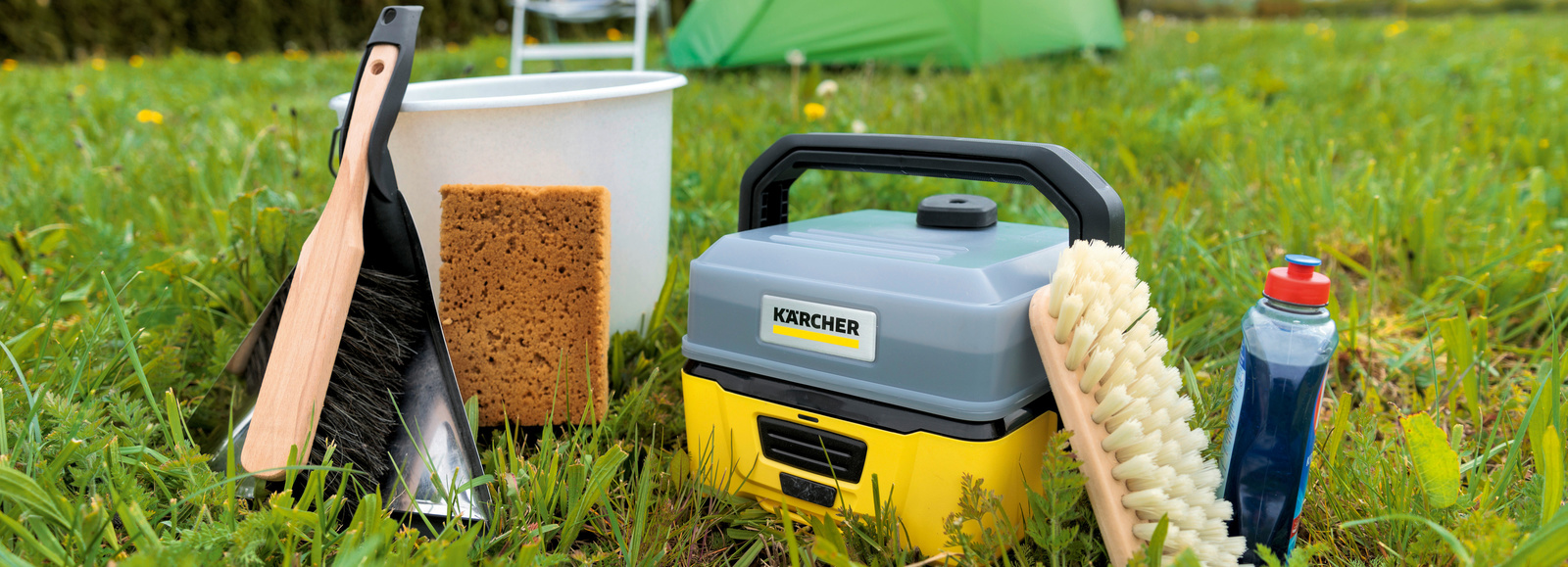
Dirty camping gear? How to get your tent, dishes and chairs clean again
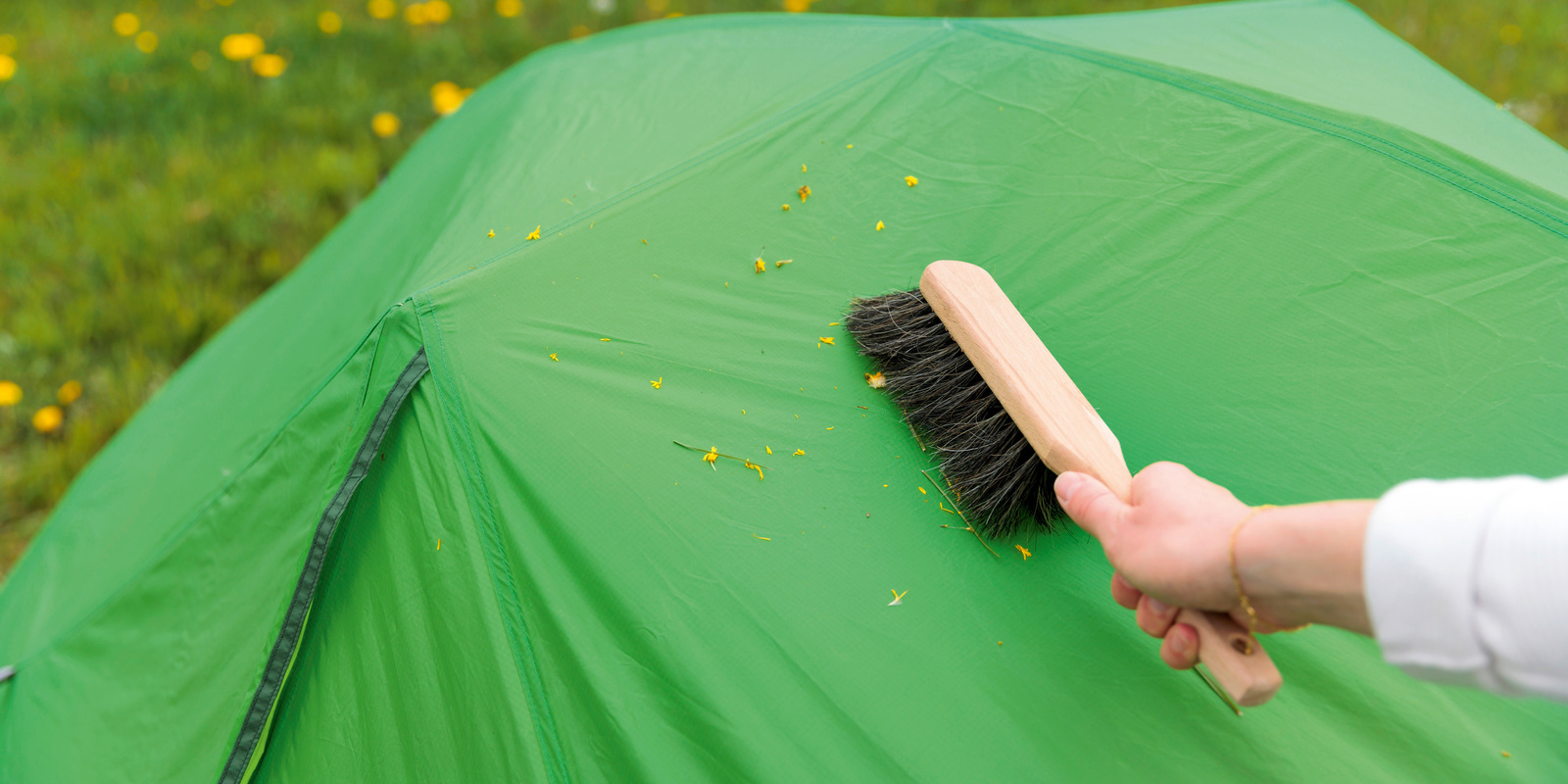
Cleaning the caravan’s awning: When you take the awning down, you should shake it out thoroughly and then carefully pack it back up (dry). If pollen or loose dirt has accumulated on the awning or tent, it can be removed carefully with a soft hand broom. Cleaning agents should be avoided to protect the awning’s or tent’s coating. By the way: If you clean your awning or tent more often, you will enjoy its waterproof coating for longer. This is because weather-related dirt can reduce the effectiveness of the waterproof coating. A good indication of whether the tent or awning should be impregnated is to wet it with a garden hose or bucket of water. If the water beads up, the tent is still waterproof.

Washing camping tableware: You often don’t have the luxury of a dishwasher at most campgrounds or during a road trip. Caravans and mobile homes are most likely equipped with a freshwater tank and a sink, so that plates, pots, and cups can be washed by hand. To keep the interior clean, it is better to wash the dishes outside in a bowl with lukewarm water. A sponge, brush and washing-up liquid are suitable for this purpose. Of course, you can also use a water hose, especially if dried-on food is difficult to remove. A popular tip among camping fans: boil water, mix in some citric acid and pour it over the dirty dishes, let it soak for a few minutes and then wipe it thoroughly with a cloth.
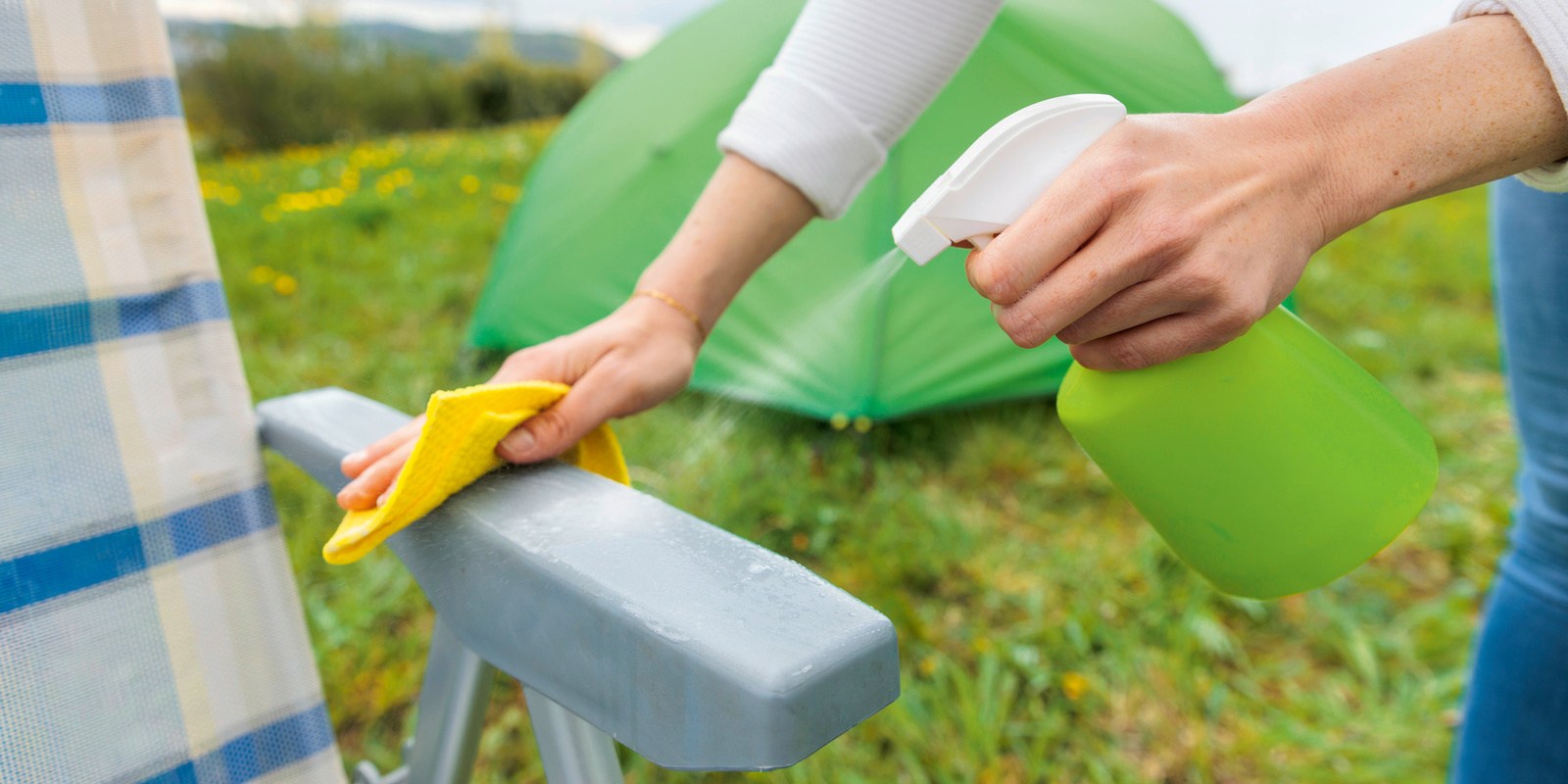
Cleaning Camping Chairs: Aluminium and plastic camping chairs are quite easy to clean. Usually, it is enough to wipe them with a damp cloth and a little washing-up liquid. For stubborn dirt, a water hose with a spray gun attachment is best. Alternatively, a pressure washer can be used on the soiled surface. Distribute the universal cleaner either with a spray bottle or alternatively with the help of a foam nozzle and the medium pressure washer. Afterwards, rinse everything with clean water. Finally, wipe the cleaned surfaces thoroughly with a dry cloth to prevent unsightly water stains.
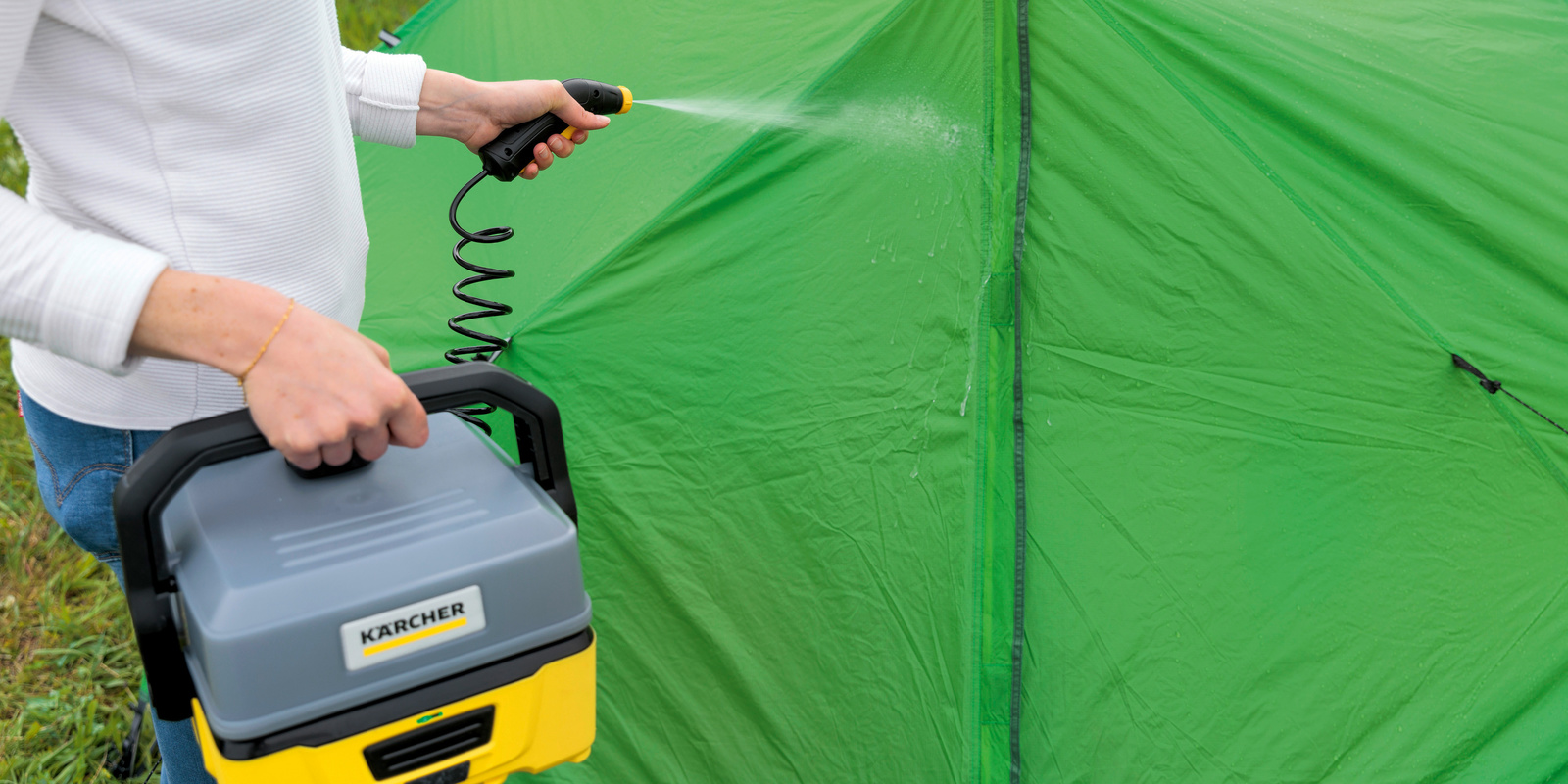
If you don’t want to spend an unnecessary amount of time cleaning your camping equipment, simply grab the pressure washer. This cleans camping equipment quickly and effectively. However, if you are on the road and there is no access to power, smart camping fans should make use of a battery powered pressure washer in combination with a suction hose or a mobile cleaner with integrated battery and water tank. With these mobile cleaning solutions, cleaning camping accessories is a breeze!
How to get hiking boots, bike and surfboard clean again while on the road?
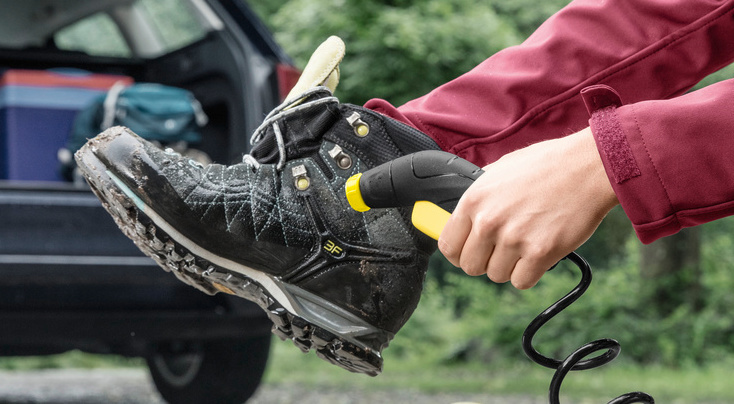
Clean hiking boots: To ensure that the pleasure of high-quality hiking boots lasts for a long time to come, they should be thoroughly cleaned and maintained after each use. First remove coarse dirt. With polyester, it is usually enough to loosen dirt with a sponge, water, and a little soapy water. For leather shoes, a somewhat harder brush is recommended. If the hiking boots are very dirty, you can clean them with a water hose or the mobile low-pressure cleaner, in combination with a brush. Before cleaning, you should also remove laces and insoles. Then wash the inside of the shoe with water and soap. Then rinse the inside and, if necessary, the outside of the shoe again with clean water until all dirt and detergent is removed. To dry, stuff the shoes with newspaper and ideally do not place them directly in the sun or under a heater as this could damage the material. Use shoe wax to protect the hiking boots and keep them clean for longer.
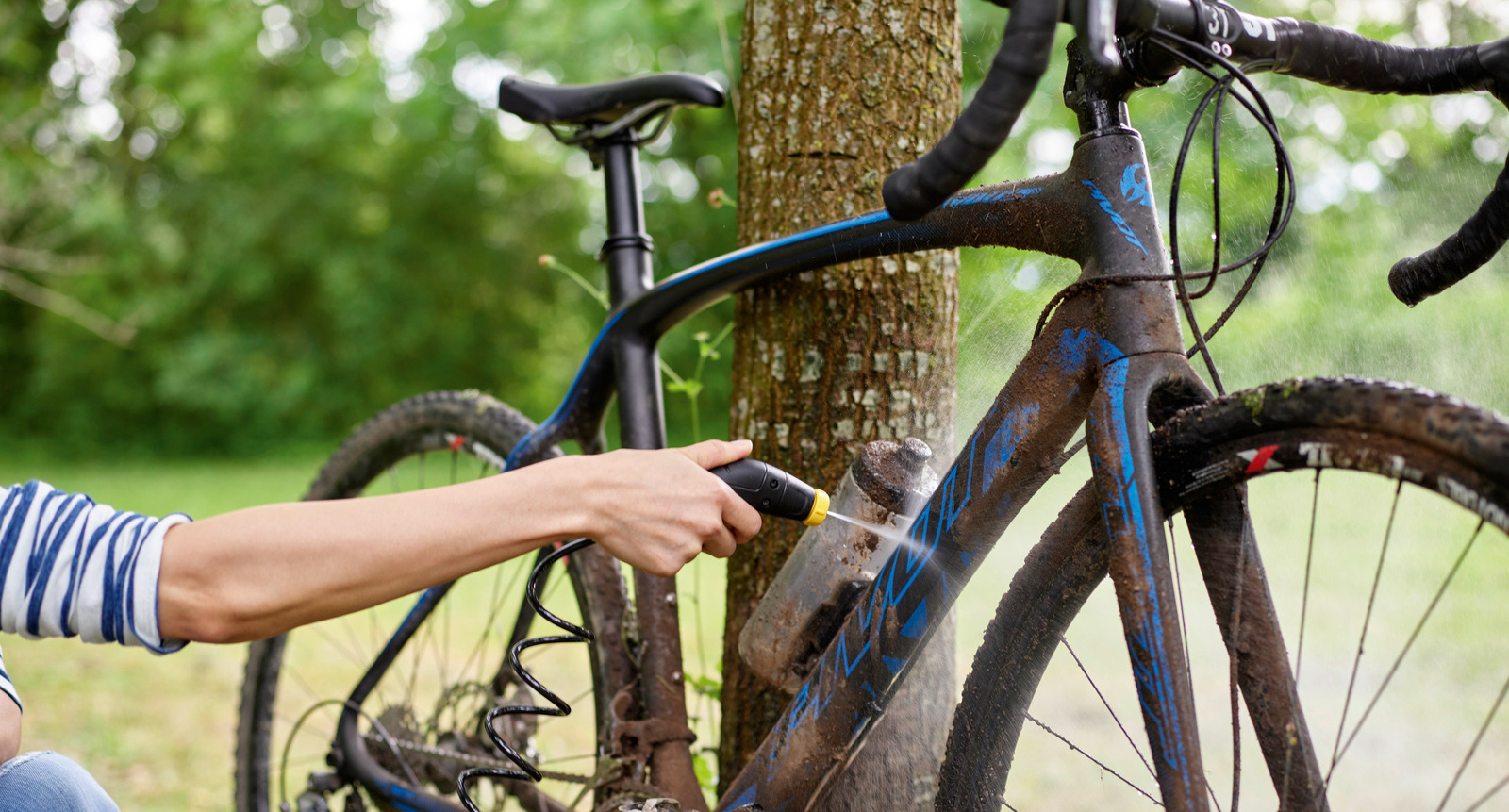
Clean your bike: After an extensive bike ride through woods and fields, it’s normal for your bike to be dirty. To prevent rust and to keep gears and brakes performing well, it is best to clean all components directly after the bike ride. This requires a bucket of water and two sponges. First, clean the frame with one sponge and the other components with a separate sponge. This will prevent wax or oil residue from coming into contact with the frame. For effective cleaning, it is best to use a special bike cleaner.
After rinsing and cleaning all components, take either a bucket of water or the garden hose to rinse off the bike. It’s especially easy with a mobile cleaner. At home, you can then dedicate some time to a thorough bike cleaning session, for example with the pressure washer.
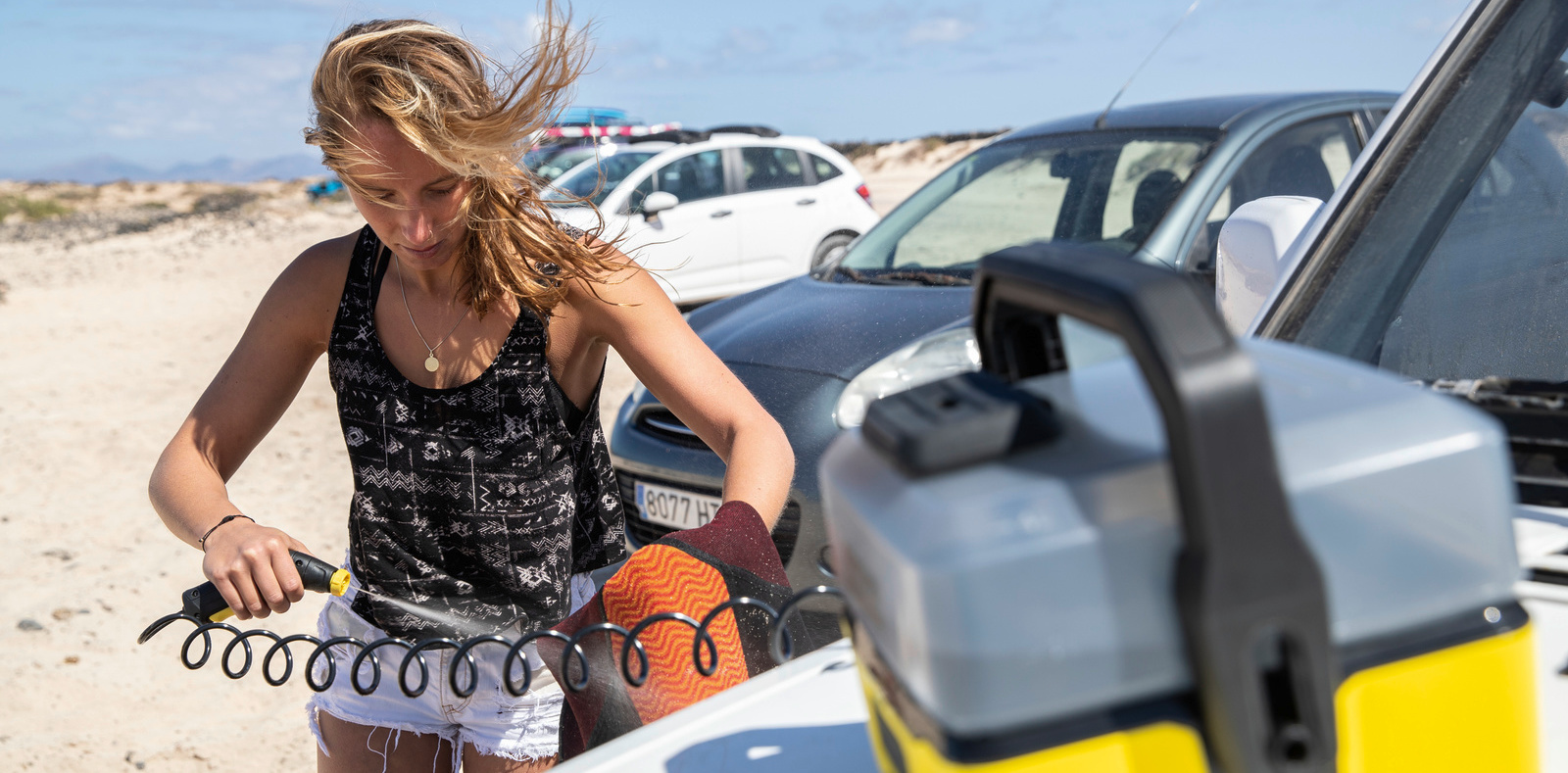
Clean surfboard and wetsuit: After swimming or surfing in the sea, you should thoroughly clean your wetsuit and surfboard and get rid of sand and salt water residue, as both can attack the material. The coating of the wetsuit especially can become brittle due to the salt. The surfboard and wetsuit can be briefly sprayed with the garden hose. If you are on the road, however, you often don’t have this option. In this case a mobile low-pressure cleaner is a good idea. To dry the wetsuit, turn it inside out, although this basically happens automatically when you take it off. In addition, the suit should never be left to dry in the blazing sun otherwise the neoprene material could get damaged by heat and UV rays. Make sure you find a shady spot.
Camping with a dog? How to get your four-legged friend clean again
Going on long walks is most dogs’ favourite activity. Their paws and fur getting dirty in the process doesn’t bother them. So that they do not soil the boot of the car or the interior of the caravan after the walk, dog owners should clean their paws and if necessary, also their fur. Dirt likes to accumulate under the paws especially. They can be cleaned gently with a little warm water and a soft brush, for example.
Tip
With the optional pet accessory box for the mobile cleaner, you are well equipped for cleaning your beloved four-legged friend even when you are on the road. It contains a cone jet nozzle specially developed for dogs with a pleasant, soft shower jet for cleaning fur and paws. In addition, the set includes a fur cleaning brush for removing stubborn dirt from the animal’s fur and a particularly absorbent microfibre towel for drying.







